Visit international museums with Drs Kaldenbach!
Enjoy a tailor-made art and architecture tour of Germany - Deutschland with your own private lecturer and study leader! Your own Wandering Educator Professor. Please note: I do NOT run a travel agency. For practical matters a travel agency could be asked to do a good job.
For small groups only. Enrich your eyes and brain and visit the best art museums in Germany. University styled tutorials for clients who like engaged and enquiring minds.
Book this BBC quality private guided art and architecture + museums tour in one or more of these historic cities of Germany: Berlin, Aachen, Cologne, Düsseldorf, Frankfurt am Main, Kassel, Wurzburg, Nurnberg, Munich, Karlsruhe, .
Get to know the deep concepts of Bildung. Deutsche Kultur. Deutsche Zivilisation. Historic background - Hintergrund. Länder and their individual characteristics.
Literature. Themes: Frederick the enlightened Prussian king. European wars. Hitler and his gang of Nazi thugs. The Chancellor-Kanzler, 1945 democracy with Adenauer. The East-West now together again.
Private lectures will include 19th c and 20c social and political history, including WW2, the Hour Zero and the era of rebuilding, the Economic Miracle (Wirtschaftswunder).
Please note I do NOT do the hotel booking and car or bus booking. I only take care of museums, art, culture.
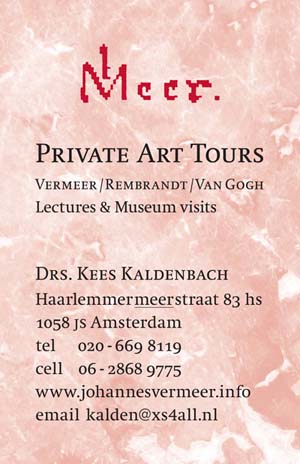 The street poster shown above addresses a social issue: it shows a Dürer drawing of a female and the text:
The street poster shown above addresses a social issue: it shows a Dürer drawing of a female and the text:

July 2013: Ricardo N and his wife Francis S. live in New York City and are full-time NYC art aficianados, travelling the world and visiting most of the fine art centers in Europe.
In June-July 2013 they toured for three full days with Drs Kees Kaldenbach.
Ricardo: "I would rate you as terrific. It is a great treat being with you - You saved my life in showing me the Mauritshuis collection - I thought it was completely closed!"
Francis N.: "Kees is outstanding... he has a very rare gift among any the great number of professional tour guide we met in our lifetime... in presenting a deep and very specific art history knowledge, and in combining this with passion and and easy going presentation.
My husband and I have spent our lives in the art world of NYC and the West Coast. We have rarely met such a wonderful guide. Kees is an outstanding fountain of visual knowledge and historic insight. He truly is top class within the field of Western art history!"

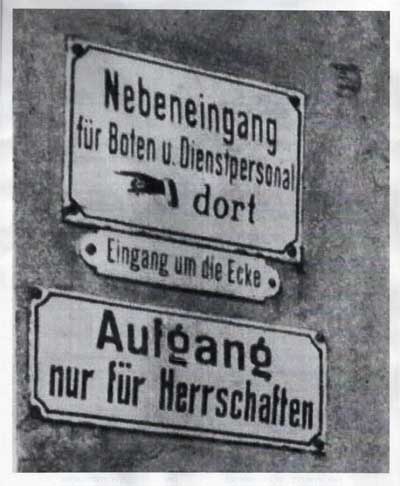 Subjects: History, Art History and Architecture, in-depth museum visits.
Academic tour by the senior scholar-lecturer, art
historian Drs. Kees Kaldenbach. Perfect English and German spoken*
Subjects: History, Art History and Architecture, in-depth museum visits.
Academic tour by the senior scholar-lecturer, art
historian Drs. Kees Kaldenbach. Perfect English and German spoken*Do you desire a private teacher to show you the finest works of art and architecture? I am trained as a teacher and as art historian and will personally guide you around Germany for an in-depth visit to the high culture, art, architecture and German history, including WW2. A custom-designed culturally enriching and wonderful itinerary. Read my biography.
Transport: Visit to these cities in Germany is possible by train or a bus with a driver. I can also join you in a private car but prefer not do the driving. Did you know there are hardly any speed limits in the Autobahn - 130 km/H or 81 Mph is the advised speed.
Please note I do provide the art history and architecture lectures, but not the transport, hotel accomodation, restaurants etc etc.

Applied philosophy: i mage to the right: Early 20th C. enameled sign probably attachted to a wealthy private home: "Nebeneingang für Boten u. Dienstpersonal <-- dort / Eingang um die Ecke / Aufgang nur für Herrschaften."
In English translation: "Secondary entrance for messengers and service personnel over <-- there / Entrance around the corner / Stairs only for Gentlemen."
Question. What does this say about society, culture, social stratification, authority?

A guide through Art Hotspots in Germany. What you do get is a gifted, enthusiastic speaker with stories to tell and a gift for explaining both in the sense of knowledge and honing your vision system. One remarkable voice about my quality:
Dear Drs. Kees Kaldenbach,
We wanted to express our gratitude for the insightful lectures you gave on Rembrandt at Oglethorpe University Museum of Art in honor of our celebrating his 400th Birthday with the special exhibition: "Sordid and Sacred: the beggars in Rembrandt's etchings".
Your skillful presentations captivated our record-breaking audience. These fine lectures were able to be appreciated on several levels from novice to professional. Your lectures have a rare quality of being soundly based on your thorough study of Rembrandt, mixed with your keen, first-hand observation and your quick, fluid creative assessments and solutions to visual questions.
Above all you are highly attentive to your audience by involving them into your lecture.
Thank you again for your visit.
Respectfully yours,
Lloyd Nick, Director
Oglethorpe University Museum of Art
Atlanta, Georgia, USA
More:testimonials

.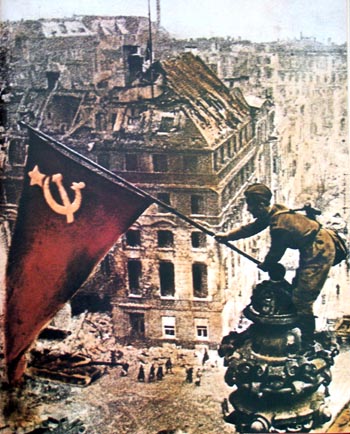
.
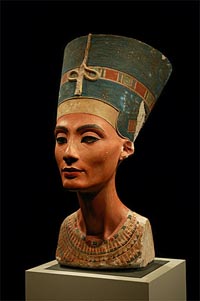 Berlin
Berlin
During the last decades I have often visited Berlin. Berlin is XXL, so when looking on the map, and things seem pretty walkable, chances are this is hardly the case. Great public transport with a multi-day tickets solves your transport problem.
Museum visits would include these highlights: the refurbished museum group on Museumsinsel (a group of first class museums on the museum island which include complete buildings from Greek culture plus the Egyptian gallery.)
Near the Brandenburg gate is the Gemäldegalerie with its fab collection of European paintings. From Flemish primitives to Caravaggio and from Rembrandt to Vermeer. Great paintings! Put together with a sense of visual beauty.
Berlin has been a hot spot for all minority groups at the fringe of society, being cordoned off during the GDR/DDR years; it still shows its quaint character.
A WW2 walk cannot be missed.
In 2013 I stayed for a week in Berlin, re-acquainting myself with many museums and monuments.

Dresden
When I first visited Dresden it was still firmly in DDR/GDR hands. The Russians had been so kind to hand back the wonderful works of Art, the priceless Italian paintings including the Raffael Madonna, the Dutch works: no less than two Vermeer and good Rembrandts... A prize collection, also of later Italian masters: Bellotto and other yummi paintings. Too bad many paintings have a thick layer of yellow varnish and too many are shown behind glass. The quality of this glass is not optimal and makes viewing difficult, especially with high gloss paintings.
Its historic housing, the Zwinger with the Painting Gallery of Old Masters (Gemäldegalerie Alte Meister) had already been reconstructed at great expense by the DDR, one of the things they did right.
The Gemaeldegalerie of key paintings still has the treasures which were initially shipped to the USSR in 1945 and handed back in 1955 against all expectations. Brace yourself for 1) Waiting lines. 2) Depressing building that will get you down3) Horrid glass panes in front of most paintings 4) Lighting that is not always Ok with side windows. OK, OK. To mention something positive: The gardens and sculpture grottos are magnificent and open for free.
Now after Unification, the main church has also been re-built, and it completes the fabulous old cityscape of "Florence on the Elbe river". A tapestry of Allied bombs created firestorms in Hamburg and Dresden (1945). Infernal. Later on discussions started about the reasons to flatten this cultural capital with hardly any military value.
In 2013 I revisited in Dresden, re-acquainting myself with many museums and monuments.

Aachen/Aix
During the last decades I have often visited Aachen/Aix. Visits would include the octagonal Aachen Cathedral with the throne of Charlemagne. Pretty good church treasury nearby. In WW2 the bomber pilots were instructed to keep the Cathedrals of Aachen and Cologne intact as visual markers. Or did saving an irreplacable cultural icon play a role in this Allied decision?
You may also take the waters, swim in the healthy mineral baths and drink the waters. It tastes pretty yukki.

Cologne/Köln
During the last decades I have often visited Cologne / Köln. The highlight is the Cathedral (Dom). The great magnet was the shrine inside, drawing multitudes of travelers and pilgrims. The last phase of construction from the 1850s to 1880 became the focus and centerpiece of the German drive to political and cultural unification.
To the right a remarkable image: a combination of actual photograph (30%) and a very good drawing (70%) that showed the population what one was stiving for in finishing the edifice. With German precision the drawing was so well executed that for many years the printed image was filed in the Cologne archive as "photograph just after completion, 1880" whereas it was actually produced decades before.
Cologne / Köln is situated on the banks of the Rhine and has been wonderfully built up again. Statue of the Chancellor Adenauer is a good place to talk about the rebirth of a nation.
We will also explore a number of Romanesque churches, rebuilt from the 1945 rubble. It was actually the Nazi troops that shelled Cologne from the orther side of the Rhine as the Allied armioes approached. Scorched earth tactics.
The town is now economically and artistically rich again and boasts a series of first-class art museums including the Wallraf, showing good old painting, modern art, many christian art objects. History goes back to the Roman days (Roman Germanic Museum) and there is a big museum to prove it. Cologne is famous for shopping experience as well.

Frankfurt am Main
Since 1977 I have visited Frankfurt am Main about 6 times. The Städel Museum excels in Dutch painting, masterworks by Rembrandt and Johannes Vermeer of Delft The early Flemish painting is also well represented. The Goethe portrait by Tischbein is considered a national icon.The collection has been put together by citizens who donated their best works (rather thanbeing the collections of German princes of counts) and it results in of pure visual beauty put together by a series of collectors with good eyes. One of my all-favourite museums. Situated on the Museum embankment (Museumsufer). Glorious. Visit the Stadelsches Museum!
Save cost in Frankfurt am Main : MuseumsuferCard & Ticket either valid for 2 days or the more expensive one a full year.

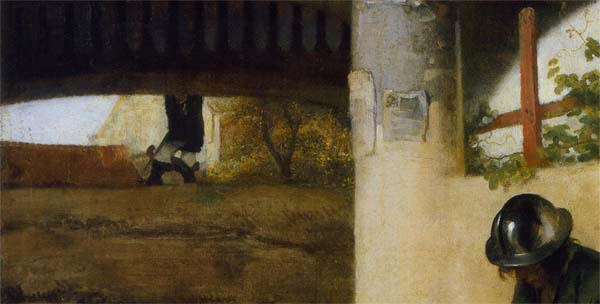 Schwerin
Schwerin
In 2009 a long held wish of mine came through: a visit to Schwerin. Specifically to the Staatliches Museum.
This Museum is small and excels in Dutch painting, like a jewel box. Works by major masters. Rubens, Rembrandt, Jan Brueghel, Frans Hals. World-class works are the Sentry (Torwache) by Carel Fabritius, and a lady at the clavichord by Frans van Mieris.
To the right: Detail of the Fabritius after restoration. Bizarre legs walking on a parapet. Cinematographic. Below: detail before restoration.
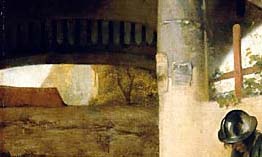

Braunschweig
Since 1977 I have visited Braunschweig about 4 times. The Herzog Anton Ulrich-Museum excels in Dutch painting, especially that sort of History painting with a clear historical and intellectual message... referring to the history of Greece or Rome, bible, or referring to literature. I would describe it as a collection based on art theory and iconography and analytical art knowledge, rather than a collection of pure visual beauty. Works by Giorgione, Rubens, Rembrandt and Johannes Vermeer of Delft (not the best of the latter, but hey, there are only some 26 in the whole world! Good collection of graphic art.

Kassel
In 1976 I visited Kassel. Pride of place is the castle (Schloss) Wilhelmshöhe with its incredible Old Master painting gallery (Gemäldegalerie Alte Meister). In 1748 Landgraf Wilhelm VIII, having enough cash around, started an 8 year buying spree - he amassed ca. 800 paintings, mostly by Dutch and Flemish masters. Luckily he had art agents and art buyers all over Western Europe with a very good eye for first-class art. Very high quality! A must-see. The hilly, landscaped park with fountains is also interesting.
Money saving tip for Kassel: All museums on 1 ticket including bus trips: Buy the "Kombiticket der KVG".

Würzburg
In 2012 I have undertaken a study tour through Bavaria / Bayern, incl Würzburg. If you like to see a completely-over-the-top Baroque extravaganza, your favourite tour highlight will be the Residenz palace (recently restored at fabulous cost) and its formal garden. In the Residenz you will be in awe of one of the largest ceiling paintings in the world, painted by Tiepolo. Miraculously this ceiling was saved during an allied attack in WW2 when the roof beams above it started to burn. Other rooms to the side of this hall were reconstructed, their paneling having been stored in safety.
Afterwards, as a sobering antidote you may visit to the utterly strong and masculin castle (Burg) on the Würzburg hill, well worth it.
Have you ever been in a wine cellar with a length of 250 meter? Wine caskets as high as an adult man and rows upon rows of them? Juliusspital is the ticket. Free entry. Free wine tasting. For the last 435 years wine sales have paid for the upkeep of the local hospital and old age home. How is that for a well founded socialized system of medical and welfare care for the local population!
Having taken in all of this architectural goodness, we will sit down at Osteria, a truly fantastic indoor/outdoor Italian restaurant overlooking the river, where you will eat the very best pizza in the world, thin, crunchy (knusprich) savoury and XXL. One giant pizza feeds two hungry mouths. Incredible quality and value, see image below!

Nuremberg/Nürnberg/Neurenberg
In 2012 I have undertaken a study tour through Bavaria staying in Nürnberg, studying the local culture, museums, castles, monuments, libraries, staying there for a number of days in a room managed by the GNM, intended for scientific Researchers.
If you like the tangible remains of Bavarian folk tradition and folk art, trades and crafts, farmhouse interiors, farm tools, instruments etc etc etc etc. visit the XXL Germanisches Nationalmuseum (GNM). In contrast to what the name promises - it is not a museum about Germany but mainly about Bavaria. Small section of paintings. Good section on prehistory. The picture on the right shows early settlement on the banks of lake Bodensee. If you want to see the real thing go to the Open Air museums (Die Freilichtmuseen am Bodensee).
Incredibly large sections on folk culture. Granny's attic, unsorted and sometimes uninspired, like the series of musical instruments. This musical instrument section leaves something to be desired: where are the buttons to hear the pre-recorded sound of the clavichords?
Below a small series of Dutch paintings, A Claesz on the left and two Rembrandts on the right. Pretty good stuff. These are actually VERY good early Rembrandts and I would be honored to show you why. In-depth.
At the Castle/Burg one may see the exterior architecture and a great view of town for free. A steep climb. A visit to the inside chapel and Kaiser rooms is not really worth your time. See story below.
Outside town there is the Documentation Centre in the old Nazi Party Rally Grounds. It is one of the better WW2 institutes. The old town was severely bombed, presumably because it was the center of Nazi rally and PR activity and thus some 80-90% of the town was flattened, bomb destruction meted out by the Allies. In the 1950s and 1960s architectural reconstruction took place along the old curved street lines. I have got a series of before (1945) and after (1960) reproductions to show you the energetric German rebuilding work (Die Deutschen sind fleißig am Arbeiten).
Lots of impressions of life during WW2 at the Documentation Centre in the old Nazi Party Rally Grounds (below). Architecture that was build to stand 1000 years.

Munich/München
In 2012 I completed a study tour through Bavaria / Bayern including München / Munich. I have often visited this city since 1975.
A thrilling and soaring highlight is the group of first-class paintings at the Alte Pinakothek (this Greek word denoting picture gallery). The Alte Pinakothek shows cream of the crop in old master paintings: Dürer, Rubens, Dutch masters. Close by is a whole group of fine art museums. Opposite is the New/Neue Pinakothek showing 19th C masters. Then across the tram track there is the recent Pinakothek der Moderne, opened in 2002 and the new Egyptian Museum will open soon, after 2013. There is a museum bus: Bus line 100 trailing along most of 21 city museums.
If you want to visit a number of Munich museums, for instance theAlte + Neue Pinakothekand the Moderne, then buy a 1 day pass for 4 museums including Schack gallery! Use bus line 100, the Museum bus taking you everywhere.
Old and young people with a taste for industry, chemistry, metals, electricity will eat their hearts out at the Deutsche Museum. Some rooms still have a 1950s flavour. High voltage electric flashes caused by voltages up to 300 000 Volts and currents of up to 1000 Ampere cause booming electric sparks and crashing noises that will electrify you. Shows are repeated a number of times each day.
The highly ornate Asamkirche church near Sendlinger Tor is an outrageous Baroque extravaganza. An architect tripping at it were on LSD. Opposite you find good ice-slushes and ice creams and yoghurts to cool your mind down again.
At Königsplatz was the Nazi rally ground and some important Nazi buildings stood there. We will look for the still existing plinths (base) of that building. We will try and sneak into the University of Music and Performing Arts (Hochschule für Musik und Theater). A brand new museum is being built to tell us about the Nazi era.
At the University stairwell (Lichthof der Universität) visit the Weiße Rose monumenty of the Scholl youths who distributed anti-Nazi leaflets in 1943. They were caught and executed for this action.
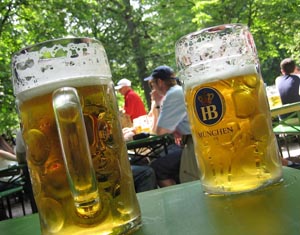 The new Synagogue is normally closed to the public ~ open for services only (oy). Next door the Jewish museum has nice architecture, nice bookstore and about 10 religious objects on show (Hey! any millionaire cares to donate proper museum contents?)
The new Synagogue is normally closed to the public ~ open for services only (oy). Next door the Jewish museum has nice architecture, nice bookstore and about 10 religious objects on show (Hey! any millionaire cares to donate proper museum contents?)
Inside information: The Oktoberfest takes place in September. It is mind boggling in all respects. Huge circus tents erected by breweries. Food. Folk music. Men dressed up in leather pants (Lederhosen). Strong waitresses dressed up in traditional Bavarian dresses (shoelaces tying their breasts together) walk around carrying some 5 or 6 Maß of beer, each containing 1 liter tightly gripped in the left hand and 5 or 6 in the right hand. Add up the weight of the heavy duty glasses and you have a champion weight lifting event. I will also show you one of the best secluded beer gardens and will tell what odd events happened there in 1975.

Karlsruhe
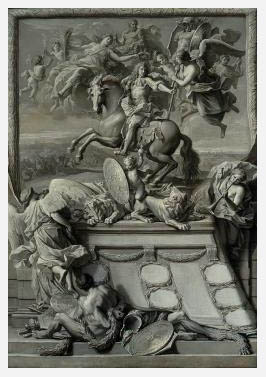
In 2012, during my study tour through Bavaria / Bayern, I visited the main museum of Karlsruhe: Staatliche Kunsthalle. Fab collection of graphic art / art on paper, and a vast collection of very good paintings.
The large painting shown here, by Coypel, is a crossover between painting and graphic arts because Colpel's painting was made as an image for an engraver to work on, in order to create a highly finished and perfect plate for prints. Beautiful new recent acquisition.
In this museum you will discover large collections of high quality paintings spanning many Western schools. Initially collected during centuries by local rulers: the Markgrafen von Baden, including Friedrich VI von Baden-Durlach. Later on Princess Karoline Luise also diligently collected Dutch art, and the paintings she desired were those with a "high finish".
In the 19th century section the painter Hans Thoma is well represented, having created a complete "surround" chapel with 360 degrees of religious imagery. Great Anselm Feuerbach set of paintings as well, including self portraits and a XXL masterpiece. German Romanticism at its best.
Have you ever come across an art museum with fairly low expectations and leaving it almost drunk with elation? This is your ticket!
Funny event: at the Railway station I asked the tramway ticket person where the most important museum was located. She did not have a clue. "Go ask the Tourist Information!"

Düsseldorf
During the last four decades I have often visited Düsseldorf, the luxury shopping extravaganza of Germany, I was there both in summer and in winter, perhaps more than 10 to 20 times. The Christmas market is wonderful and full of atmosphere and wooden stalls with local food.
Museumwise: The large Art Palace (Kunst Palast) by the river and the big bridge is well worth visiting. The museum architecture dates from the scary 1930s: is severe and all masculin. Interesting collections inside with Dusseldorf Academy school of painting and German expressionist painting. New modern wing (not situated on the river wing but the opposite wing on the city side) opened in 2011. M must-see
There are two other big modern museum buildings in the center, designed for temporary exhibitions only.

What did I not list -> and also wonderful to visit:
In Essen: Folkwang museum for fine art - and Zeche Zollverein for industrial archaeology, with XXL heavy industry machines and more. VERY cool.
Hombroich: sleek architecture containing modern art & Japanese scrolls in Langen Foundation and 1 Km further on a large open air landscape park Museum Insel Hombroich, with surprising buildings full of sculpture. You will feel like Indiana Jones.
Stuttgart: Strangely enough I expected much out there and the new Staatsgalerie wing is interesting, but I was underwhelmed by the collection. Yet three nice Rembrandts. Good to see a work by Juan de Pareja, whose overwhelming portrait by Velasques is in the Met, NYC.

General behaviour tips & travel tips & Money saving tips - for extended travel in Germany.
Some cultural discussions:
 RULE nr 1 in Germany: ALLES IST VERBOTEN.
RULE nr 1 in Germany: ALLES IST VERBOTEN.
Many Germans like rules and strict order - and they are convinced that that control and punishment is the way forward. Forbidden (Verboten) signs are all around. If you ask for permission for anything out of the ordinary, most likely you will hear No (Nein!). So be clever, just go ahead, and do not ask for anything - but slip-slide into buildings and do your thing there innocently without prior consent.
I will give you a little test. You are a well behaved tourist and have bought a ticket for a castle tour with a tourguide (Führer) and a group of 21 clients. Of these 15 are German-speaking and 5 speak only English, no German. One out of this group (1) is bi-lingial English and German. The tour takes 1 hour. At the very beginning the Führer is kindly requested to speak in German and in English. The answer was Nein, I have to explain too much! So in order to be of help to the other 5, the one bilingual client (that is moi) starts to softly translate for the remaining 5 English clients who did not understand one word. What happens next?: Choose option 1, 2 or 3.
1) The Führer sees what happens and will kindly start to speak in both languages.
2) The Führer speaks and then gives a minute of time and space for translation.
3) The Führer forbids any translation and insists upon order.
The correct answer is of course the last option - and from two men in the German speaking group comes the loud yell: "We have paid for our tour! You are disturbing us!" Then World war 3 started. After a lot of my angry letter writing the state management decided to start using multi-lanuage headphone guided tours.
= = = = = = =
Below some more VERBOTEN signs, about NOT parking bicycles. I actually saw a street in München ner the University with 25 of these signs. The most terrifying verboten you can think of is Policely verboten!
And the one below is a spoof. The Germans do have a sense of humor: Extinguish your fag (cigarette). Buckle up! Shut op your face!
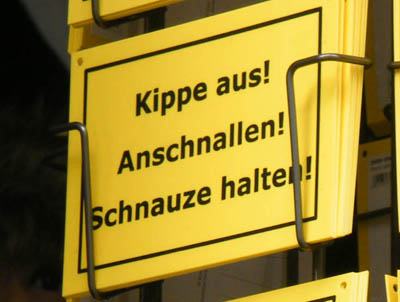

FOOD

Of course there is regular sausage and pig legs with the hairs still embedded. Be my guest. This is called Good regular fare (Gut Bürgerliche Küche)
Try foreign food. Lots of choice. Vapiano will do fine. Located in many towns. Fast Italian food, high quality, freshly made, good herbs, low price. Sort of half way self service.
When in Würzburg try the Osteria, a fantastic indoor/outdoor Italian restaurant overlooking the river, where you will eat the very best pizza in the world, thin, crunchy (knusprich) savoury and XXL. One giant pizza feeds two hungry mouths. Incredible quality and value! (Right)
Try Beer gardens (Biergarten) for an immersion in pleasant sociable drinking.
TRANSPORT
Money saving tips. When taking slow or local trains or buses in Bavaria, buy the very cheap 1-day Bavaria Card (Bayernkarte) for groups up to 5 persons. Includes access to slow trains, plus all trams, buses etc etc. and valid for 1 day. Great way to get to Neuschwanstein.
However, when in a hurry between big cities better use the fast expensive ICE trains, with speeds of up to 100 - 300 Km/h. . A typical 1-way ticket between Nürnberg and München is about E 50. However, when you buy ICE cards EXACTLY 2 months in advance (precisely that day) you may score a 50% or 75% rebate (Sparpreis - Supersparpreis). See your travel agent or railway desk.
German Autobahns are fab. Annual deaths have dramatically decreased over thge last 20 years. Still about 1 persons dies every day on that system of superhighways.
If you want to visit a number of Munich museums, for instance the Alte + Neue Pinakothek and the Moderne, then buy a 1 day pass for 4 museums including Schack! Use bus line 100, the Museum bus.
Subway in Münich (U-bahn) is pretty expensive, single ride at E 2.50 - but there is very cheap for a 3-day group ticket for all U-bahn, S-bahn, trams and bus. After purchase you must use the date stamp machine to validate this ticket. Ticket controls are seldom.
Taxis start with a low start tariff of about E 2.50. So with a group and a limited distance this is also an affordable option.
The German inner cities are often walkable, except for Berlin: Very extended.
German Railways (Deutsche Bundesbahn) has a special deal: Families with at least 4 kids between 6 to 14 years of age can obtain the Family card (Familienkarte) for papa+mama+4 kids. I guess those under 6 are free.
Please note I do art & architecture - but I do not organise hotels and transport for this trip!
ART/KUNST
We will address the question what makes good art and what makes fab art. At the GNM in Nurnberg was this sign. Pretty good theory.
DEALING WITH WW2
Generally dealing with WW2 (Vergangenheitsbewältigung) seems to be almost complete, at other times old attitudes die hard.
During the Bavaria tour I did not see too many of these Stumbling stones (Stolpersteine). This one in Karlsruhe. None seen by me in Nurnberg.
Other Fabulous things in Germany:
The art of BREAD BAKING
Truly outstanding world-class bread. Including sourdough bread (Sauerteig) with a fragrant, rich, hard crust and a moist even structure inside with a fresh lightly sour taste. The very best in the world. In Düsseldorf, Berlin, Frankfurt etc I recommend the unique super high quality department store Manufactum.
The art of PERFECTION
Once you enter Germany, everything works: systems, transport, institutions... It functions properly, on time, for an affordable price. Workers ooften want to be outstanding professionals. Being a Fachmann beaning living your professional life within your trade.
The arts of SCIENCE and INDUSTRY
Germany excels in industry, especially chemistry, metals, electricity/electronics. (Die Deutschen sind fleißig am Arbeiten). The vocational training tradition is outstanding. In the process of learning a craft, young students join a Master (Meister) in the workshop and learn the handiwork and quality hands-on. The Meister is much respected and has a central table in a pub (Stammtisch im Kneipe).
The arts of MUSIC
Germany (+ Austria) excels in music. Bach, Beethoven, Mozart. Ode to Joy as the European Anthem is a titanic production. Music performances celebrate the very best the Western Culture has to offer. Tears of joy in the eyes during the Beethoven 9th Symphony performance after the opening of the Berlin Wall and at the opening of the London Olympics 2012.
The art of rebate: getting into more MUSEUMS for less money
Berlin: the Tourist Pass offers discounts on many museums; the 3 day Museum Pass gets you in for free.
Munchen: Combination ticket for 1 day for 4 Pinakothek museums.
Frankfurt am Main : MuseumsuferCard & Ticket either for 2 days or a full year.
Dresden: Annual Museum ticket to Staatliche Kunstsammlungen Dresden (Dresden State Art Collections)
Hamburg: 2-day ticket to Museumsdienst. Hamburg museum service. Or 10 museums on 1 ticket at Hamburg Historical Museum Foundation (SHMH)
Kassel: All museums including bus trips: Das sogenannte "Kombiticket der KVG" beinhaltet den Normal-Eintritt in die Museen und Einrichtungen der Museumslandschaft Hessen Kassel sowie Hin- und Rückfahrt durch die KVG im KasselPlus-Gebiet.
Cologne: no info found.
Vienna / Wien: Kunsthistorisches Museum offers an annual ticket for about E 30.

Dutch/Nederlandse version.
Amsterdam fuer Deutschsprachigen.
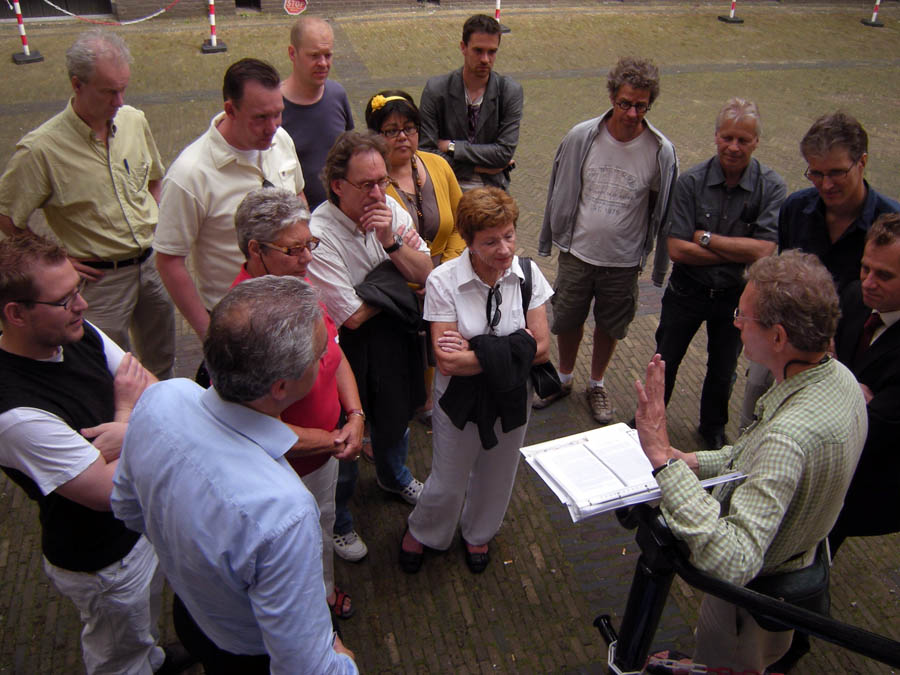
Auch auf Deutsch!
Kunsthistoriker Drs. Kees Kaldenbach wohnt in Amsterdam, Holland. Zertifizierdes Tätigkeitsschwerpunkt: kunstgeschichtliche Führungen.
Die hier Genannten Museeen enthalten Spitzenwerke holländischen und internationale Malerei und Kultur. Entdecken ist ein schöne Ereignis! Sie erfahren jedesmal einen Museumsbesuch auf höchster Ebene. Sie werden vielleicht ein Fan von Vermeer, Rembrandt, und vielleicht 49 anderen holländischen und internationale Malern.
Meine Ausbildung ist akademisch (Kunstgeschichte, Archäologie, Architektur), aber meine Präsentation ist sehr offen und kommunikativ, geeignet für ein breites Publikum.
Alle Tours werden von mir massgeschneidert angeboten. Alle Termine und Preise werden nach Email - oder Telefonkontakt festgelegt.
Preis is abhängig von Abstand, Programm, Übernachtungen, Abstand von Amsterdam, Gruppengröße - von 1 bis 9 Personen.
Bitte merken Sie: Ich organisiere praktische Sachen, also keine Hotels und Transport!
Practical matters
Read a biography.
Save tons of $$ money in Holland
Fine Print / Legal issues
Bookings are finalized with a downpayment. I will send detailed instructions. Cancellation: The charges for cancellation more than 48 hours in advance are covered by your deposit. Charges for client cancellation 24-48 hours in advance: 25% of the agreed sum to be billed to the client's credit card. Charges for client cancellation less than 24 hours in advance: 60% of the agreed sum to be billed to the client's credit card. When booking, you agree to these arrangements.

As an art historian based in Amsterdam, The Netherlands, I can meet you in Germany for a personalized guided tours of art museums and the wonderful historic center. This will incur train / plane and hotel cost.
Together we will experience the beauty and history. Enjoy yourself and learn about history while strolling and discussing the country's history, art and culture. In doing so, we may touch many bases - spanning not only fine art and architecture but also the city's history and current social issues. See client testimonials.
Read my biography.
Starting at your hotel I will take you on a wonderful private cultural walking tour of your choice. My guided itinerary offers you accessable informative conversation in English, Dutch, or German (my French and Italian are more limited).
Drs. Kaldenbach is chairman of the Circle of Academic Tour Guides of the Netherlands and Flanders (CATON)
You may also arrange this VIP treatment for business contacts or friends. Our cultural tour organisation office will take care of a unique and memorable experience.
Drs. Kees Kaldenbach is your private "scholar-lecturer on culture tours" *.
*Martha Gellhorn, Travels with Myself and another, p. 182.
Please contact me for time and fees of the tailor-made tour you ar interested in.
These tailor made tours are available upon request - please contact me to book a date. Minimum group size: 1 person. Maximum group size is limited to about 10 persons. With a megaphone I can also manage larger groups on the streets.
Photo by Dick Martin.
Endorsements
The Rijksmuseum has done me the honor of linking the main Rijksmuseum site to my website. Start at www.rijksmuseum.nl and select Collection. Then choose 'Digital Collaboration' and the 'Digital Vermeer House'.
I conduct Rembrandt walks in Amsterdam for the Netherlands Bureau of Tourism, London and New York City offices. Their clients include important journalists.
The travel site www.luxurytraveler.com has devoted a main feature to my tours and walks.
Read further client testimonials.
Read a biography.
Drs. Kees Kaldenbach has been featured in television and radio documentaries, including BBC2 TV, NTV Japan, Danish TV and Radio Netherlands World Service. In July 2004 he was interviewed about Delft artists by Tetsuya Tsuruhara for the leading Japanese newspaper The Yomiuri Shimbun. In 2004 and 2005 he acted in an advisory role to additional BBC teams. Kaldenbach has written extensively on Vermeer and 17th century Delft, on Vincent van Gogh and on other art history topics.
Drs. Kees Kaldenbach is your private "scholar-lecturer on culture tours".
Further information is available on his encyclopedic web site: www.johannesvermeer.info
Germany travel
Contact information
 Contact
information:
Contact
information:
Drs. Kees Kaldenbach , kalden@xs4all.nl
Haarlemmermeerstraat 83 hs
1058 JS Amsterdam
The Netherlands
telephone 020 - 669 8119 (from abroad NL +20 - 669 8119)
cell phone 06 - 2868 9775 (from abroad NL +6 - 2868 9775)
Reaction, questions? Read client testimonials.
Open seven days a week.
Member of the Amsterdam Chamber of Commerce (Kamer van Koophandel).
Email responses and bookings to art historian Drs. Kees Kaldenbach.
This page forms part of the 2000+ item Vermeer web site at www.xs4all.nl/~kalden
Updated July 25, 2012. Updated 15 february 2017.